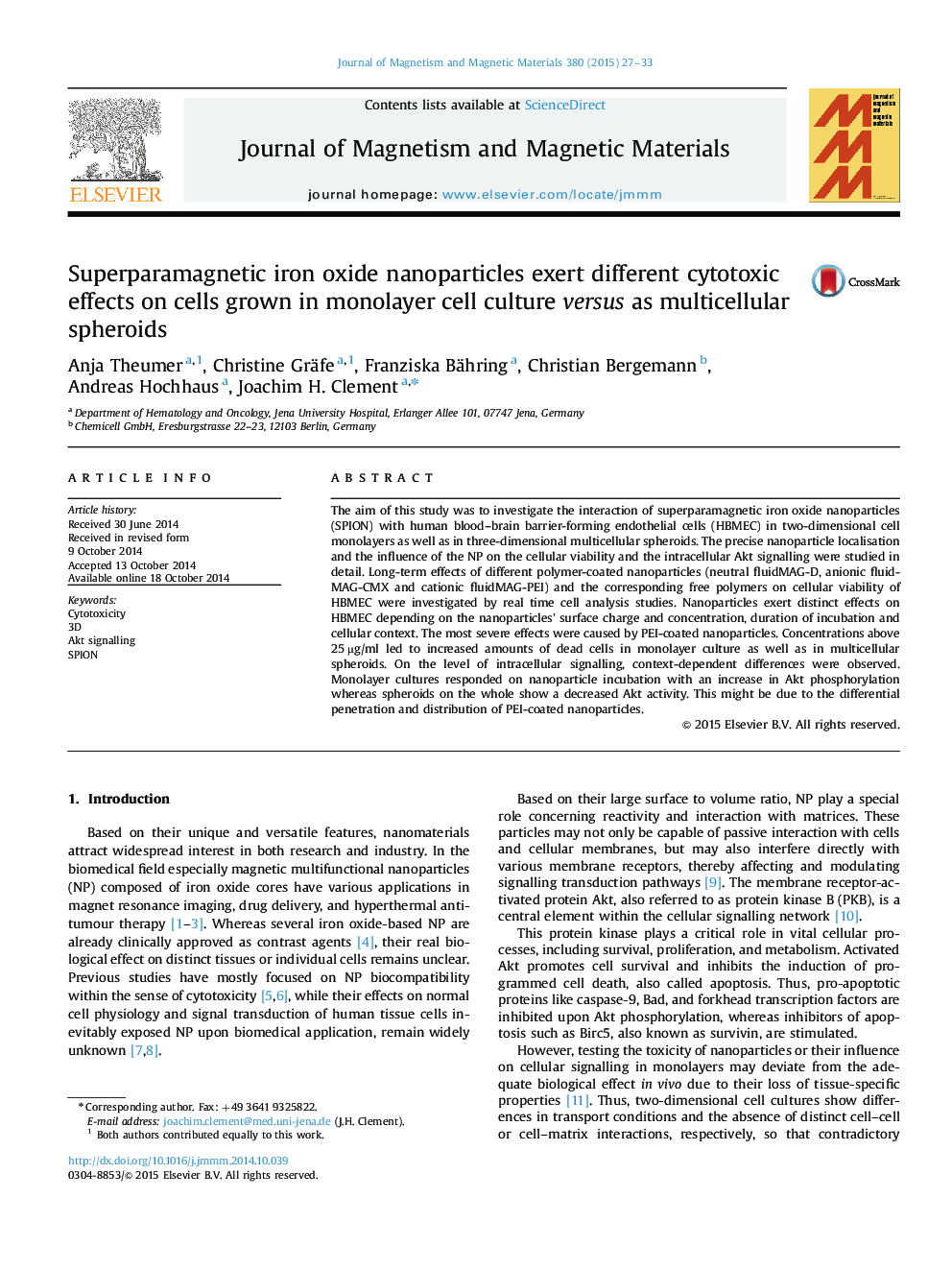| Article ID | Journal | Published Year | Pages | File Type |
|---|---|---|---|---|
| 1798852 | Journal of Magnetism and Magnetic Materials | 2015 | 7 Pages |
The aim of this study was to investigate the interaction of superparamagnetic iron oxide nanoparticles (SPION) with human blood–brain barrier-forming endothelial cells (HBMEC) in two-dimensional cell monolayers as well as in three-dimensional multicellular spheroids. The precise nanoparticle localisation and the influence of the NP on the cellular viability and the intracellular Akt signalling were studied in detail. Long-term effects of different polymer-coated nanoparticles (neutral fluidMAG-D, anionic fluidMAG-CMX and cationic fluidMAG-PEI) and the corresponding free polymers on cellular viability of HBMEC were investigated by real time cell analysis studies. Nanoparticles exert distinct effects on HBMEC depending on the nanoparticles' surface charge and concentration, duration of incubation and cellular context. The most severe effects were caused by PEI-coated nanoparticles. Concentrations above 25 µg/ml led to increased amounts of dead cells in monolayer culture as well as in multicellular spheroids. On the level of intracellular signalling, context-dependent differences were observed. Monolayer cultures responded on nanoparticle incubation with an increase in Akt phosphorylation whereas spheroids on the whole show a decreased Akt activity. This might be due to the differential penetration and distribution of PEI-coated nanoparticles.
